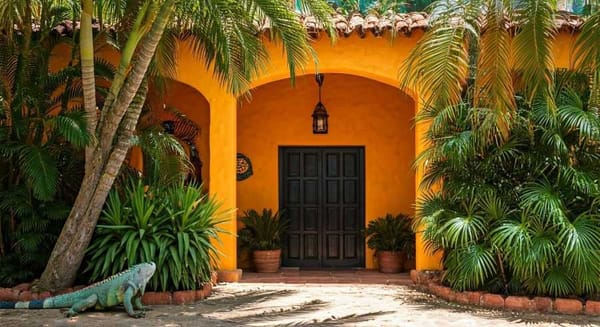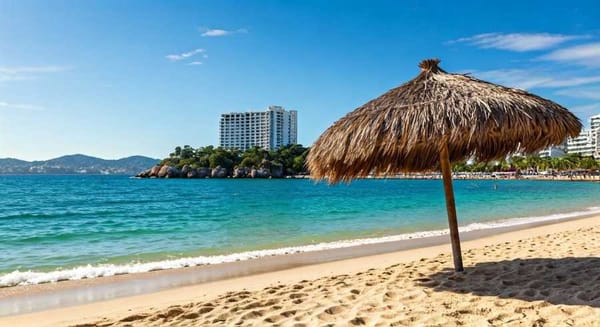With effort and perseverance from the Large Hadron Collider in Switzerland
Being from Guerrero has helped me a lot, we work hard every day; I sold pots, and garden soil, made breakfasts, and raffles, and many people trusted me and helped me. Cristóbal Miguel García Jaimes participates in the Particle Accelerator that "will be the biggest machine humanity has ever built".

In the mountainous city of Lausanne, Switzerland, more than 10,000 kilometers from San Miguel Totolapan, Guerrero, his home state, Cristobal Miguel Garcia Jaimes, a student of the Faculty of Sciences (FC) of the UNAM, took his professional exam remotely and obtained his degree in Physics from the National University.
His final dissertation, the modality of Project to Support Scientific Teaching Outside the Classroom: "The Combi of Science. There is no place where science cannot reach...", had the objective of visualizing the teaching action that teachers carry out in the rural communities of Guerrero. The oral replica was postponed at the time due to a health emergency.
In an interview, García Jaimes, National Youth Award 2014, shared his experiences and recalled that during his confinement he was accepted for a postgraduate course at the Federal Polytechnic School of Lausanne, Switzerland, where he is part of the scientists who are building the Lepton Circular Collider, which will measure 100 kilometers in diameter, and "will be the largest machine humanity has ever built". Funding for his stay comes from the international organization, Marie Curie Foundation.
"I come here to do my doctorate and I am doing Particle Accelerator Physics, these are machines that increase and squeeze energy and its speed, and the largest in the world is at CERN, (The European Organization for Nuclear Research), which is 27 kilometers in circumference, like a big donut. I work at the FCC, which is the Future Circular Collider, a 100-kilometer circular collider, although it is currently at 91,174 meters and 11 centimeters," he explained.
The university graduate from the National Preparatory School 6 "Antonio Caso", explained that his work is focused on the design of the optical part: "I am a grain of sand. The thing is that in the doctorate they ask you to develop your thesis in an internship and develop it in a laboratory. So my work is at CERN, because my co-advisor is assigned there, and since the first semester I have been lucky enough to work there. I am in the Olympus of the world's particle accelerators".
A long road
Cristóbal Miguel García's undergraduate work was directed by Efraín Chávez Lomelí, a researcher at the Institute of Physics (IF). Among the members of the jury were: Arcadio Huerta Hernández, also from this entity, as well as the academics of the Faculty of Sciences (FC), José Manuel Alvarado Reyes, and Rosaura Ruiz Gutiérrez, who also serves as Secretary of Education, Science, Technology and Innovation of Mexico City.
The project was part of his social service as a Physicist at the Museum of Light of the General Directorate for the Dissemination of Science of the UNAM.
"Getting here was a difficult challenge. I must confess that it has been one of the most complicated I have faced. The pandemic hit me in many ways because I won a scholarship at the international level, we were very few chosen among hundreds of thousands of applicants, but the problem was how to get here and have a vaccine accepted," he recalled.
"At the tip of hard times, we did it: I sold pots, garden soil, made breakfasts, and raffles, and many people trusted me and helped me, I have several fellow countrymen from Mexico and Guerrero who helped me, I had to give conferences to raise funds, it has been a very long way, I needed six thousand dollars to get here, the tickets were provided by a friend from Ciudad Altamirano, Guerrero. Fortunately, we are already on this side," he said.
Now, he continued, I also travel long distances on this side of the Atlantic. CERN is in Geneva, and I live in Lausanne where my university is located; so I take a bus, get to the Metro, get on a line, transfer and from there board a train to Geneva, which takes 50 minutes, and then get on the streetcar. The trip takes two hours and 20 minutes.
"The truth is that I am not a genius, nor am I gifted, nor is there anything extraordinary, but effort and perseverance: walk, walk, walk and then see how the furrow is so that I don't get scared because sometimes we are afraid, we have human capital. Being from Guerrero has helped me a lot because there we work hard every day, and here it is no different; not even in the back to take flight", he concluded.




